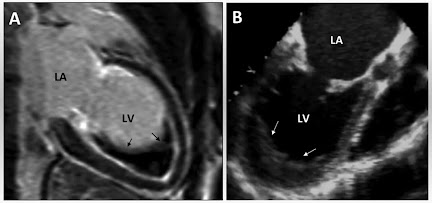Emphysema
Definition
It is the permanent dilatation of air spaces and destruction of their wall distal to terminal bronchiole.
Classification of emphysema
2. Panacinar/ panlobular/ entire respiratory acinus emphysema.
 |
| Involvement of the anatomical part of the lungs |
Etiopathogenesis
1. Tobacco smoking.
2. Decrease level of alpha-1 antitrypsin.
3. Atmospheric pollution.
4. Occupational exposure.
Morphological changes
Grossly :
1. Lung will be voluminous and pale with blood.
2. The edges of the lungs are rounded.
3. Mild cases shows dilatation of air spaces.
4. Advanced cases shows subpleural bullae and blebs.
Microscopically : Depending upon the type of emphysema -
1. Dilatation of air spaces and destruction of septal walls of part of acinus involved respiratory bronchioles, alveolar ducts and alveolar sacs.
2. Changes of bronchitis may be present.
3. Bullae and blebs when present show fibrosis and chronic inflammation of the walls.
Clinical Features : Features may develop after degeneration of 33% of lung parenchyma. Usually diagnosing age is 60 years. Thus clinical features of chronic bronchitis and emphysema are same that is-
i. There is long history of slowly increasing severe exertional dyspnoea.
ii. Patient take help always to accessory muscles for respiration.
iii. Chest is barrel-shaped and hyper-resonant.
iv. Cough occurs late after dyspnoea starts and is associated with scanty mucoid sputum.
v. Recurrent respiratory infections are not frequent.
vi. Patient are called 'pink puffers' as they remain well oxygenated and have tachypnoea.
vii. Weight loss is common.
viii. Cor pulmonale (right side enlargement of the heart).
ix. Hypercapneic respiratory failure.
x. Chest X-rays shows small heart with hyperinflated lungs.
Source : Textbook of pathology ( Harsh Mohan ) 7th edition
2. The edges of the lungs are rounded.
3. Mild cases shows dilatation of air spaces.
4. Advanced cases shows subpleural bullae and blebs.
Bullae - these are air filled cyst-like or bubble like structures, larger than 1 cm in diameter. They are formed by rupture of adjacent air spaces.
Blebs - it is the result of rupture of alveoli directly into the subpleural interstitial tissue. these are the most common cause of spontaneous pneumothorax.
Microscopically : Depending upon the type of emphysema -
1. Dilatation of air spaces and destruction of septal walls of part of acinus involved respiratory bronchioles, alveolar ducts and alveolar sacs.
2. Changes of bronchitis may be present.
3. Bullae and blebs when present show fibrosis and chronic inflammation of the walls.
Clinical Features : Features may develop after degeneration of 33% of lung parenchyma. Usually diagnosing age is 60 years. Thus clinical features of chronic bronchitis and emphysema are same that is-
i. There is long history of slowly increasing severe exertional dyspnoea.
ii. Patient take help always to accessory muscles for respiration.
iii. Chest is barrel-shaped and hyper-resonant.
iv. Cough occurs late after dyspnoea starts and is associated with scanty mucoid sputum.
v. Recurrent respiratory infections are not frequent.
vi. Patient are called 'pink puffers' as they remain well oxygenated and have tachypnoea.
vii. Weight loss is common.
viii. Cor pulmonale (right side enlargement of the heart).
ix. Hypercapneic respiratory failure.
x. Chest X-rays shows small heart with hyperinflated lungs.
Source : Textbook of pathology ( Harsh Mohan ) 7th edition
Related Posts -








No comments:
Post a Comment
Please do not enter any spam link in the comment box